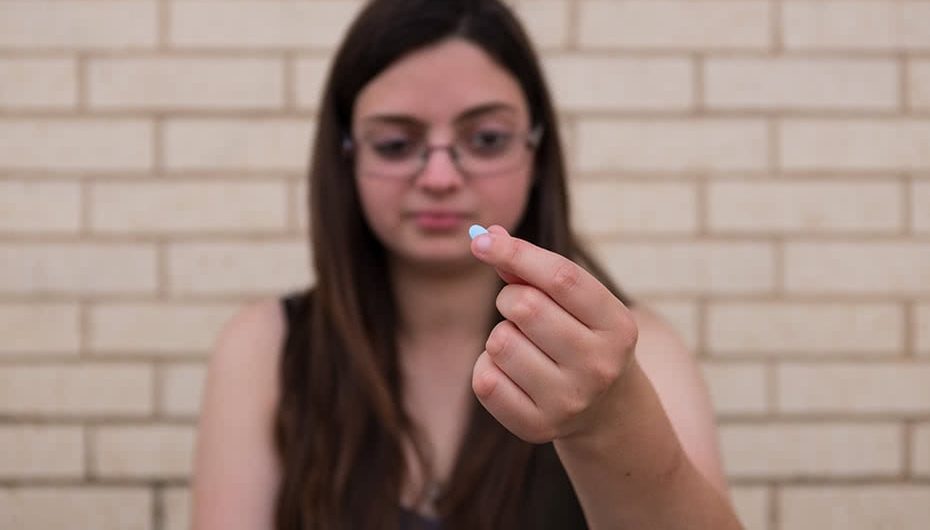Diazepam, commonly known as valium, is a benzodiazepine derivative. Diazepam was invented by Dr. Leo Sternback. Diazepam was released in 1963 as an improvement to the drug Librium. Diazepam immediately became popular helping the manufacturer, Hoffman-La Roche, become a giant in the industry of pharmaceuticals. Diazepam is two times stronger than Librium and surpassed its predecessor in sales within the first year of its release. The success of diazepam caused a boom in the production of benzodiazepine derivatives by pharmaceutical companies all over the country. They viewed these benzodiazepines as a better option than barbiturates. Diazepam was the number one selling pharmaceutical from 1969 to 1982. In recent years the view of diazepam has become increasingly negative due to abuse and problems with recreational use.
Classifications
Diazepam is classified as a schedule IV drug. It is administered by prescription only, and is considered illegal contraband without a proper prescription.
Uses
Diazepam is used for a number of medical reasons. The main reason for a prescription of Diazepam is for the treatment of anxiety and panic disorders. It is also used to treat insomnia, alcohol withdrawal, and as a pre-medication for sedation during surgery. Diazepam is also used as a recreational drug. This has caused a lot of negative feedback toward diazepam in recent years. It is primarily used as a party drug and often consumed while using alcohol.
Effects
Diazepam affects the dopamine system in the brain similar to the way opiates and alcohol affects this area. The effects of diazepam can be felt anywhere between 15-30 minutes after use. Taken intravenously the affects can be felt in 5-10 minutes after being administered. When taken out of its medicinal context diazepam produces a “drunk-like” feeling. The use of diazepam has been said to lower inhibitions and cause mild euphoria. It has been described as a “care-free” high which slows down and individual’s bodily functions. Diazepam is often used in combination with alcohol; this mixture can be extremely dangerous.
Similar drugs
Drugs similar to diazepam include Alprazolam (Xanax), Clonazepam (Klonopin), Flunitrazepam (Rohypnol), and Lorazepam (Ativan). All these drugs are classified as Benzodiazepines and produce similar effects to that of diazepam (Valium).
[ADUNIT]
Addiction information
Diazepam as with other benzodiazepines can cause physical dependence. Benzodiazepines are a commonly misused recreational drug. In recent years, benzodiazepines have accounted for 35% of all prescription medication hospitalizations. Consistent use of Diazepam can result in withdrawal symptoms. The withdrawal from benzodiazepines can cause seizures and can be ultimately fatal. The possibility of physical dependence and addiction to diazepam is extremely high when abused recreationally or taken longer than recommended by a physician. It is recommended that individuals wean off the drugs slowly when they are discontinuing its use. As use of the drug continues a tolerance begins to build. This causes the body to need more of the drug to get the same desired effect, many individuals become physically dependent by increasing doses once a tolerance has been built. Approximately one third of individuals who take benzodiazepines for more than four weeks acquire a physical dependency and experience withdrawal symptoms upon cessation. When an individual becomes physically dependent on diazepam or any other benzodiazepines they will have increased anxiety when not under the influence of the drug. Studies show that patients who cease regular use of benzodiazepines have increased emotional instability and depression.
Withdrawal
Withdrawal from diazepam can be a very painful experience and in some cases may be fatal. The withdrawal from diazepam can cause insomnia, anxiety, panic attacks, and in more extreme cases seizures and psychosis. Depression is a common problem associated with the cessation of diazepam, especially when in withdrawal from the substance. When withdrawing from diazepam an individual may feel intense anxiety, weakness, light-headedness, experience headaches and muscle discomfort. It is recommended that an individual who is withdrawing from any benzodiazepine seek treatment or see their physician.
Overdose
When abusing diazepam recreationally or taking more than prescribed there is a chance of overdose and death. Individuals who consume too much diazepam may experience these symptoms hours before overdosing: Drowsiness, mental confusion, weakness, impaired motor functions, and hypotension. The consumption of too much diazepam can result in a coma. The chances of an overdose are increased when diazepam is mixed with other mind altering chemicals such as alcohol and opiates. This is a serious issue that has resulted in the premature death of many individuals.


